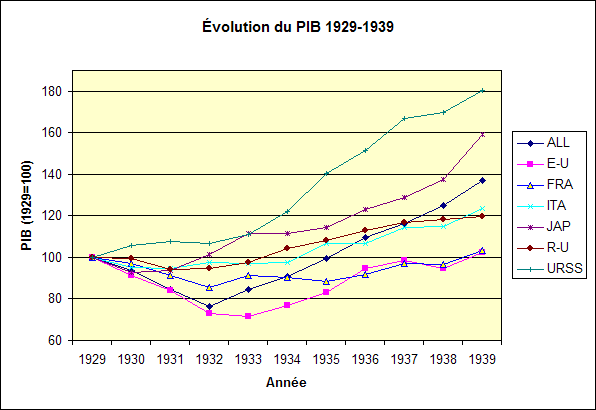
So I’m working my way through Amity Shlaes’ The Forgotten Man: A New History of the Great Depression, which is admittedly over a decade old now (published in 2007). A bit of a summary as well as its reception at the time is available at Wikipedia: her key argument is that not only was Hoover inept in how he reacted to the emerging depression (especially in implementing the Smoot-Hawley Tariff) but that FDR also, by his actions prolonged the Depression. His delight in “experimentation” meant that businesses worried about uncertainty and that climate of uncertainty prevented recovery.
The argument does make a certain amount of sense — after all, our history books give two contradictory messages: “FDR saved us from the Depression” and “only the war ended the Depression.” When we talk about stimulus programs now, they’re not meant merely to keep people adequately fed and housed until some external event ends the economic downturn; they are, we’re told, meant to boost the economy into recovery, so it seems to me worthwhile to question the conventional wisdom that New New Deals will save the day.
But I’m not an expert on the subject. So let’s start with Wikipedia’s general characterization of Depressions globally, since one of Shlaes’ first claims is that the decade-long downturn was not somehow “natural” or inevitable as evidenced by the fact that in other countries recovery was much faster.
In general, the Depression was a worldwide event, and the years up to 1932 – 1933 saw extreme hardship globally. The question is what happened next.
Australia: unemployment was high in 1932, but with a gradual recovery therafter. “Unemployment, which peaked at 32% in 1932, was 11% at the start of the Second World War compared to 17.2% in the United States.”
Canada: “The Canadian recovery from the Great Depression proceeded slowly. Economists Pedro Amaral and James MacGee find that the Canadian recovery has important differences with the United States. In the U.S. productivity recovered quickly while the labour force remained depressed throughout the decade. In Canada employment quickly recovered but productivity remained well below trend. Amaral and MacGee suggest that this decline is due to the sustained reduction in international trade during the 1930s.”
France: “The Great Depression in France started in about 1931 and lasted through the remainder of the decade. The crisis started in France a bit later than other countries. The 1920s economy had grown at the very strong rate of 4.43% per year, the 1930s rate fell to only 0.63%. The depression was relatively mild compared to other countries since unemployment peaked under 5%, the fall in production was at most 20% below the 1929 output and there was no banking crisis.”
Germany: “By cutting wages and taking control of labor unions, plus public works spending, unemployment fell significantly by 1935.”
Greece: “Despite the global depression, Greece managed to suffer comparatively little, averaging an average growth rate of 3.5% from 1932 to 1939. The dictatorial regime of Ioannis Metaxas took over the Greek government in 1936, and economic growth was strong in the years leading up to the Second World War.”
Iceland: “Due to the outbreak of the Spanish Civil War, which cut Iceland’s exports of saltfish by half, the Depression lasted in Iceland until the outbreak of World War II (when prices for fish exports soared).”
Italy: Mussolini came to power well before Hitler — in 1922. No reports of any effects on unemployment, only a financial crisis in 1932 and subsequent government intervention.
Japan: “the Great Depression did not strongly affect Japan.” Currency devaluation plus deficit spending. “By 1933, Japan was already out of the depression.”
Netherlands: prolonged depression, from 1931 to 1937. As of 1933, UK, US, and most European countries had abandoned the gold standard; in 1936, France and NL left the gold standard, boosting its economy.
Sweden: “the first country worldwide to recover completely from the Great Depression.”
UK: left the gold standard in 1931 after a financial crisis and “suffered relatively less than other major countries in the Great Depression.”
And here’s a chart from the French Wikipedia article, which shows the evolution of GDP in various countries:

For the legend:
ALL = Allemagne, Germany
E – U = Etas Unis, US
FRA = France
ITA = Italy
Jap = Japan
R – U = United Kingdom
URSS = USSR
And PIB = GDP.
That the USSR grew steadly is a bit of a surprise given the manufactured famine, the Holodomor, and Stalin’s purges, but of course, this is relative to 1929, when that country was doing even worse.
Germany’s drop by 1932 was almost as bad as the US, but the recovery under Hitler was surprisingly rapid (and, yes, I’ve periodically wanted to read about that, from an economy history point of view).
France’s downturn was not as steep as the US but it likewise bumbled around for the remainder of the decade.
And the UK, as the other democracy on this chart (maybe Japan counts too, in terms of the way its economy operated at the time?), was effected substantially less grew more than the US.
But, of course, this is just one chart, and shows GDP rather than unemployment rate. A chart specifically for the UK reports that the unemployment rate was in the neighborhood of 8% – 10% during the 1920s, climbed to a peak of about 15% in 1932, then steadily declined to 12% in 1934, and 8% in 1937.
A 1998 paper, “Interwar Unemployment in International Perspective,” which is really quite long and I’ve only skimmed it, has some further tables. Among industrial workers (and I’m not sure how heavily caveatted the data is or should be), the US peaked at 37.6% in1933, dropped to 21.3% in 1937, and grew again to 27.9% in 1938 (the last year of data). In the UK, the peak was 22.1% in 1932, with a decline to 10.8% in 1937 and small increase to 12.9% in 1938. In France, the peak was in 1932, with 15.4%, dropping to 10.4% in 1936 and even further thereafter. In the Netherlands, consistent with the Wikipedia report, unemployment was high throughout the 1930s, dropping from a peak of 32.7% as late as 1936 to 19.9% in 1939. And so on. (p. 6).
In another table, average unemployment rates from 1921 to 1929, for the entire economy (not just industrial workers) stood at 18.2% for the US but only 9.8% for the UK, 8.7% in the Netherlands, and 13.3% for Canada. (No calculation for France was available in this data set.)
So, again, I’m hardly a trained economist, but this data set does seem to suggest that Shlaes’ argument has credence. Will I be convinced by the rest of the book? Stay tuned . . .












